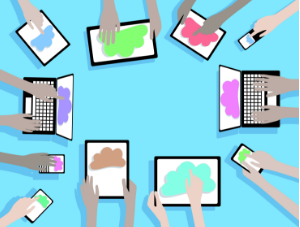Taking Clay Christensen’s class at the Harvard Business School altered my understanding of how the world works. Changes that had previously seemed counterintuitive—the struggles of certain organizations at certain times despite having great leaders and team members, for example—could be explained by understanding the theories of innovation that Clay and others were developing, including the theory of disruptive innovation.
Clay was planning to write a book on the struggles of public education. He would use these theories of innovation to help diagnose the struggles and suggest ways for public schools to innovate. I signed up to help.
As a product of public schools that I loved, I had questions. The chance to help public schools with their struggles by using theories that had proven so explanatory and helpful in so many other areas (read Thomas Thurston’s excellent piece here for the data behind it) was a potentially great opportunity to help the schools that I loved, but how useful would these theories prove to be in the education arena?
People were quick to note two differences. First, children are not in any way similar to rebar steel or disk drives—some of the notable examples Clay had studied. And we shouldn’t treat or imagine them to be so.
But today’s education system all too often does just this. It’s not the fault of anyone in the system today, but patterned after the dominant factory model of the era in which public schooling scaled, our education system functions as though all students learn at the same pace and have the same learning needs, which we know is not true. The education system we have today is, in many ways, built as a sorting system as a result. Those students who can’t keep up with the pace are sorted out at various intervals—an arrangement that worked fine for many in the past, but in today’s knowledge economy is no longer OK.
Second, others told us that the theories would be useless for education because K–12 education did not operate as a classic market; it was much more of a monopoly.
What I have learned, however, is that schools, as we have created them, do have underlying economic, or business, models. They are not naturally occurring arrangements in the world but rather more recent inventions; the way they operate is not preordained. Disrupting our K–12 schools or our public school districts is impossible today because there is no nonconsumption of education in this country, but helping our schools use disruptive innovation to disrupt the classroom—the way they arrange teaching and learning—is possible. The theories have a lot to offer schools to help them manage innovation—both of the sustaining and disruptive sort. One misreading of disruption theory has been that disruption is good and sustaining innovation is bad (I suspect that’s one reason for the gross overuse of the word disruptive). This could not be further from the truth. Successfully introducing sustaining innovations is vital for any organization to be successful; a sector without sustaining innovations stagnates.
Understanding that schools have economic models—and that they have resource allocation processes and hire products and services from various providers and people that are shaped according to governmental rules and regulations—helps to understand the market at work inside the K–12 education system. And what’s exciting is that there are plenty of opportunities to use the first disruptive innovation in education since the printing press—online learning—to transform teaching and learning to better serve each individual student within each school by personalizing and humanizing learning—and undo the factory-model assumptions that dominate our schools and treat uniformly students in the process. Because online learning is inherently modular, it can help the education system customize for each child’s distinct needs and create opportunities for more meaningful collaborative work between children and teachers.
Disruptive innovation in K–12 education in the form of online learning is also the catalyst to bring about more equitable access to high-quality education. Far too many students attend schools that don’t offer the full suite of classes they will need in life to be successful, but through online learning, we can deliver high-quality teaching and learning experiences regardless of where students live.
And lastly, disruptive innovation introduces cost control into the system, so that we can deliver a tutor-like experience for each child at a cost that won’t break the bank.
In higher education, because the landscape is so much different from K–12 education, disruptive innovation is playing a different role. Here there is significant nonconsumption of higher education. Millions of people, in the U.S. and worldwide, cannot take advantage of traditional higher colleges and universities for any number of reasons having to do with convenience and accessibility, simplicity, and cost. But they would be glad to consume education if it were delivered in a way that fit their life realities. Convenience, accessibility, simplicity, and affordability are the classic benefits that disruptions extend when they emerge, and as a result—no surprise—disruptive higher education upstarts powered by online learning are jumping into the fray.
Because the fundamental underlying costs of many colleges and universities—not their tuition, but their expenses—have risen rapidly even as governmental subsidies have not been able to keep pace because of the rising red ink and other obligations facing governments, with the emergence of disruptive innovations in higher education, it is true that many traditional colleges and universities will ultimately be threatened, not by MOOCs per se, but by the general unbundling of higher education and the ability for students to customize their education for their different needs from a variety of components. Many traditional institutions will also be OK and continue to exist largely unthreatened—and even absorb online learning as a sustaining innovation to disrupt their classrooms but not the schools themselves.
What’s exciting here though is that through disruption, we have the opportunity to make a quality higher education fundamentally affordable and thereby allow many more people access to its benefits.
The disruptions happening throughout education more generally afford us an opportunity to revisit how we cultivate children’s learning and futures—and hopefully allow us to do it in a way that is even better, given what we now know today. That’s not preordained either, of course, but we have the opportunity. It’s now all of our turn to shape it appropriately.
-Michael Horn
This first appeared on Forbes.com




